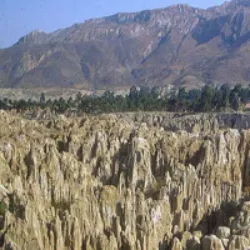Titicaca is the largest lake in terms of water volume in South America

Titicaca is the largest lake in terms of water volume in South America, located in the Andes, on the border between Peru and Bolivia. Although Lake Maracaibo in Venezuela is larger in area, Titicaca is considered the highest navigable lake in the world. With around 8,300 km², it is commercially navigable and home to 41 islands, including the artificial islands of the Uros and the island of Taquile, known for its artisanal textile products. The lake is fed by rain and meltwater, making it freshwater. Its origin is tectonic, formed during the Tertiary era. The region has an extreme climate, and Andean legends associate the lake with the birth of the Inca civilization. Inhabited by people such as the Uros, Titicaca is an important tourist destination, offering natural landscapes and archaeological sites.
Did you know??










